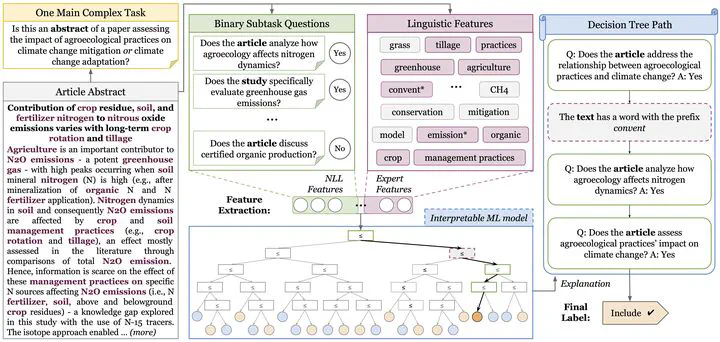Deep Natural Language Feature Learning for Interpretable Prediction
Dec 1, 2023·, ·
0 min read
·
0 min read
Felipe Urrutia
Cristian Buc
Valentin Barriere
 NLLF and Expert Features help to understand the decision process of an interpretable model for complex task solving.
NLLF and Expert Features help to understand the decision process of an interpretable model for complex task solving.Abstract
We propose a general method to break down a main complex task into a set of intermediary easier sub-tasks, which are formulated in natural language as binary questions related to the final target task. Our method allows for representing each example by a vector consisting of the answers to these questions. We call this representation Natural Language Learned Features (NLLF). NLLF is generated by a small transformer language model (e.g., BERT) that has been trained in a Natural Language Inference (NLI) fashion, using weak labels automatically obtained from a Large Language Model (LLM). We show that the LLM normally struggles for the main task using in-context learning, but can handle these easiest subtasks and produce useful weak labels to train a BERT. The NLI-like training of the BERT allows for tackling zero-shot inference with any binary question, and not necessarily the ones seen during the training. We show that this NLLF vector not only helps to reach better performances by enhancing any classifier, but that it can be used as input of an easy-to-interpret machine learning model like a decision tree. This decision tree is interpretable but also reaches high performances, surpassing those of a pre-trained transformer in some cases. We have successfully applied this method to two completely different tasks – detecting incoherence in students’ answers to open-ended mathematics exam questions, and screening abstracts for a systematic literature review of scientific papers on climate change and agroecology.
Type
Publication
In Proceedings of the 2023 Conference on Empirical Methods in Natural Language Processing